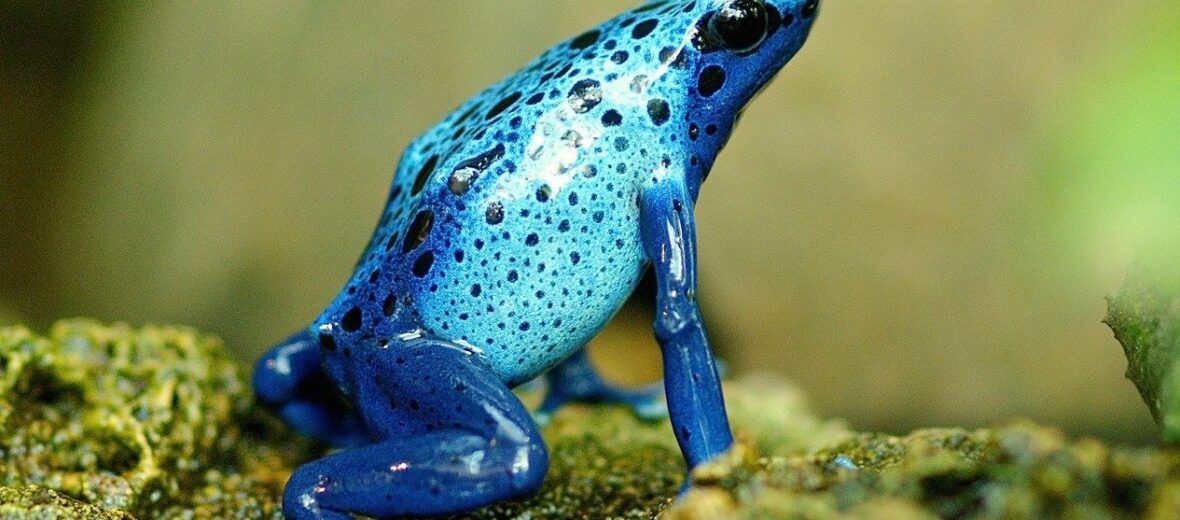
The poison dart frog, aka, poison arrow frog, poison frog, or dendrobatid, is the epitome of amphibian beauty. They come in a host of colors and all have a secret weapon. Have you ever heard the saying, “You are what you eat”? Well, these frogs are living proof that this is fact. Poison frogs can be found throughout the rainforests of Central and South America. I have personally had the opportunity to care for and breed these magnificent amphibians and they are a lot of fun to watch and work with. I even got the chance to raise and add a couple to the Aquarium of the Pacific’s frog collection. Poison dart frogs are as active as they are vibrant. Unfortunately, they are also victims of over-collection by the pet trade. They also suffer from habitat loss, pollution, climate change, and the deadly chytrid fungus. Even though they are often called dart frogs, they should just be called poison frogs.
First the Stats…
Scientific name: Dendrobatidae
Weight: Up to .14 ounces
Length: Up to 2.4 inches
Lifespan: Up to 15 years
Now on to the Facts!
1.) Golden poison frogs are considered to be the most toxic vertebrate on the planet. Their poison is strong enough to kill up to 10 full grown humans.
2.) Dart frogs are diurnal (active during the day).
3.) They use their bright coloration to warn predators that they are, in some instances, deadly toxic.
4.) Their scientific name, Dendrobatidae, translates to, “one who walks in the trees”.
5.) The poison dart frog is often mistaken for a mantella frog. However, mantellas live only in Madagascar, whereas dart frogs live in Central and South America. Both are poisonous, but mantella frogs will just make you sick; as they don’t pack enough poison strength to kill.
But wait, there’s more on the poison dart frog!
6.) Where most critters steer clear of dart frogs, the fire-bellied snake (Leimadophis epinephelus) actively seeks out these diminutive creatures as it is immune to the poison.
7.) The Choco people of western Colombia use the poison of 4 different species of poison dart frog to coat the tips of their blow darts they use for hunting birds and primates.
One dart frog contains enough poison to coat up to 50 darts and the poison lasts for up to 1 year. The poison of the golden poison dart frog is 200 times more potent than morphine! But the poison has to be injected into your
bloodstream to be toxic. Licking them does nothing but taste terrible.
8.) There are approximately 170 known species of dart frogs.
9.) They get their toxins from the alkaloid-rich arthropods they eat. These arthropods are considered the most toxic known land invertebrate in the world.
10.) Not all dart frogs are poisonous. Some tend to advertise false toxicity by piggybacking off the frogs that are poisonous. However, they will still taste nasty.
But wait, there’s still more on the poison dart frog!
11.) Dart frog poisons have been used to create a painkiller called Epibatidine, which is named after the frog that produces the poison (Epipedrobates tricolor).
12.) They prey on mites, ants, fruit flies, termites, worms, small beetles, and smaller species of centipedes.
Now a Short Poison Dart Frog Video!
Be sure to share & comment below! Also, check out the Critter Science YouTube channel. Videos added frequently!
Want to suggest a critter for me to write about? Let me know here.



